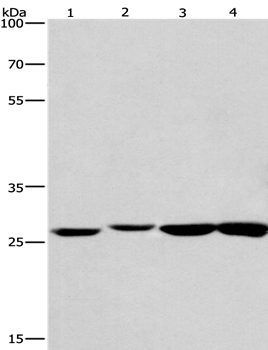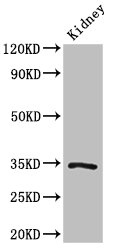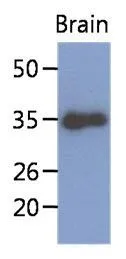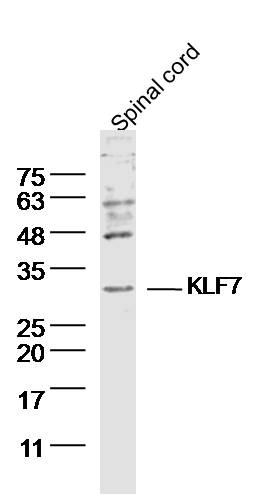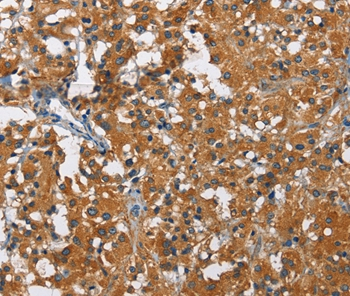
IHC-P analysis of human thyroid cancer tissue using GTX04926 KLF7 antibody. Dilution : 1:60
KLF7 antibody
GTX04926
ApplicationsWestern Blot, ImmunoHistoChemistry, ImmunoHistoChemistry Paraffin
Product group Antibodies
TargetKLF7
Overview
- SupplierGeneTex
- Product NameKLF7 antibody
- Delivery Days Customer7
- Application Supplier NoteWB: 1:500-1:2000. IHC-P: 1:50-1:200. *Optimal dilutions/concentrations should be determined by the researcher.Not tested in other applications.
- ApplicationsWestern Blot, ImmunoHistoChemistry, ImmunoHistoChemistry Paraffin
- CertificationResearch Use Only
- ClonalityPolyclonal
- Concentration2.9 mg/ml
- ConjugateUnconjugated
- Gene ID8609
- Target nameKLF7
- Target descriptionKLF transcription factor 7
- Target synonymsUKLF, Krueppel-like factor 7, Kruppel like factor 7, Kruppel-like factor 7 (ubiquitous), ubiquitous Kruppel-like factor, ubiquitous Kruppel-like transcription factor
- HostRabbit
- IsotypeIgG
- Protein IDO75840
- Protein NameKrueppel-like factor 7
- Scientific DescriptionThe protein encoded by this gene is a member of the Kruppel-like transcriptional regulator family. Members in this family regulate cell proliferation, differentiation and survival and contain three C2H2 zinc fingers at the C-terminus that mediate binding to GC-rich sites. This protein may contribute to the progression of type 2 diabetes by inhibiting insulin expression and secretion in pancreatic beta-cells and by deregulating adipocytokine secretion in adipocytes. A pseudogene of this gene is located on the long arm of chromosome 3. Alternative splicing results in multiple transcript variants. [provided by RefSeq, Aug 2012]
- Storage Instruction-20°C or -80°C,2°C to 8°C
- UNSPSC12352203

